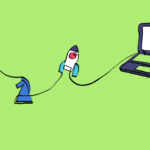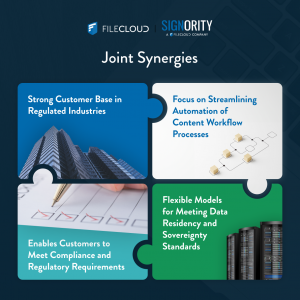Your HR department manages your company’s most valuable asset, its employees. Not knowing how to optimize HR onboarding process impacts every aspect of the organization, and directly hinders organizational success.
If you think deprioritizing HR is saving your company unneeded expenses, think again.
By not fully optimizing your HR’s capabilities, your company is actually losing money. HR facilitates strategic and organizational goals and is critical to employee retention and employee productivity. The average senior manager wastes a surprising amount of time managing underperforming employees— seven weeks a year, or over an hour each day, to be exact.
Don’t make the same mistake by reassessing, and improving your current HR onboarding capabilities.
So, how do you improve your HR capabilities so that it remains an influential, high-value function within the company?
1. Recruitment & Selection
Recruitment and selection are one of the most important functions of your HR department. Your company can only go as far as your employees can carry it— unsuccessful employees, unsuccessful business. Unfortunately, almost half of hiring managers admit to underestimating the hiring processes difficulty— even worse, over 80% of managers say their company has made hiring mistakes.
With that in mind, hiring the wrong person is super expensive. The unfit employee decreases overall company reputation and employee productivity and moral— which negatively impacts the work culture. In fact, over 53% of business owners agreed a bad hire increased stress levels amongst the rest of the team. Moreover, bad hiring decisions comprise 80% of employee turnover, and can cost upwards of 50% of their yearly salary!
Before you can hire promising individuals, you must first attract a large pool of qualified applicants. To do so, focus on improving your corporate image and use relevant channels. You should conduct an internal audit of the company’s current knowledge, skills, abilities and other attributes (KSAO’s). Through this, you can see what characteristics are needed for job success and if there are any gaps in your current labour pool. According to a recent study, the top reasons for poor hiring decisions were poor skills match and unclear performance objectives. As such, your job descriptions should be specific and in-depth, with direct reference to employee expectations and the needed KSAO’s. During the screening process, you should conduct relevant skill tests and may want to undergo realistic job previews. Make a personal connection, and pay attention to their personality and values— even the most qualified applicant on paper may not mesh well with other employees or the workplace culture.
2. HR Onboarding
A good HR onboarding strategy is extremely important. It’s your company’s first impression to your new hire. Their onboarding experience sets the tone and influences the way they perceive the company. In fact, a recent study found that new hires decide whether to stay with the company long-term within their first 6 months of being hired. Positive onboarding directly affects your ability to retain talent, and your turnover rate — this can increase employee performance by over 10%!
The first step in successful onboarding? Begin even before their first day. In fact, over 80% of leading organizations follow this rule. Even more, 50% have senior leaders take an active role in the process. These organizations are also twice as likely to use metrics, with the most valuable being: employee engagement, retention and productivity. Moreover, when your onboarding practices are structured, employees are 66% more likely to stick around. You should also explicitly state your expectations of their employment, and socialize the new hires as much as you can. According to another study, something as simple as throwing them a welcome lunch can motivate new hires to work harder, since they feel supported by their team and leaders and hold more positive views of the organization. To increase engagement and employee interest, you can make the onboarding process more interactive. Lastly, you should simplify the process as best you can. This will not only help the new hire, but it will also help you immensely. New employee onboarding comes with lots of paperwork and can be extremely tedious and overwhelming for both parties. By automating what you can, you can simplify the entire process, and alleviate some of the stress from both you and your new hire. Automating will also ensure the process runs as smoothly and quickly as possible, creating a long lasting positive impression.
3. Training & Development
Employees are one of your main assets, why not invest in them? Offering your employees training and development opportunities decreases turnover and human error, while increasing employee motivation, productivity and efficiency. Your employees will also better adapt to changes and have increased satisfaction. The benefits will come full circle!
Employees want the chance to learn and grow. You should ask them first what areas they want/need to develop their skills in, and what their long-term goals are. They have the first-hand experience on what skills are important, and which ones are currently lacking. Align the training with organizational goals, and with their unique learning styles (after all, the whole point is for them to learn!). Streamline the training across departments and be sure to measure the results and outcomes so you know what to improve in the future.
4. Employee Relations
HR onboarding plays a key role in bringing employees together. Good internal employee relations decreases absenteeism and conflicts while increasing employee loyalty, morale and motivation. To strengthen your organization’s employee relations, first, focus on direct communication. Encourage employee engagement and take on a leadership role. Lead by example and bring everyone to an organizational consensus. Direct communication allows for everyone to be on the same page, and reduces the probability of harmful rumours. Keep employees well informed and up to date on important issues, such as policy changes. Create a positive and supportive culture by treating all employees equally and promoting employee participating in extracurricular activities (like team building exercises!).
5. Performance Appraisals
Performance appraisals are extremely important, even more so with today’s new age workforce. Appraisal help to align employees goals with the organizations, provide insight into the effectiveness of recruiting practices, help assess training and development needs, and improve employee productivity. This feedback should be given frequently, possibly even every day. Through this, managers will become more comfortable giving feedback, employees will feel more appreciated and supported, and problems can be stopped before they escalate. You should strive to create a positive and rewarding experience, by having a two-way conversation (not a lecture)— your employees want to feel heard and involved in the process! Once again, a performance review is a perfect opportunity for you to further explain your expectations on their performance and set clear goals.
There is no substitute for HR. Start improving your HR onboarding capabilities today and avoid many negative long-term effects.








